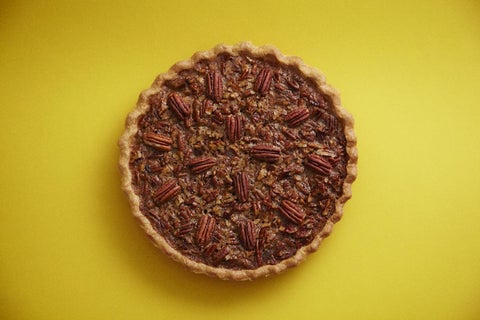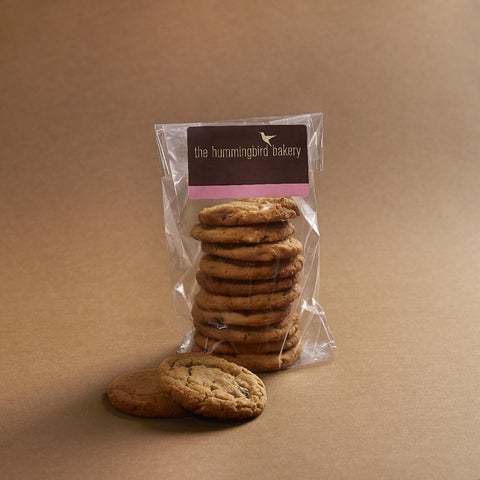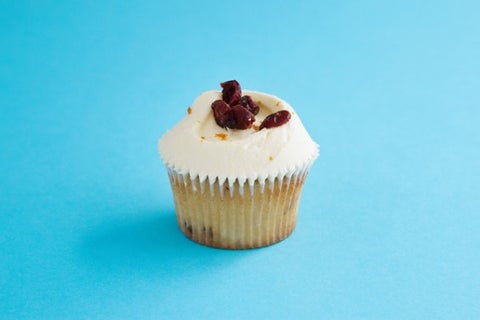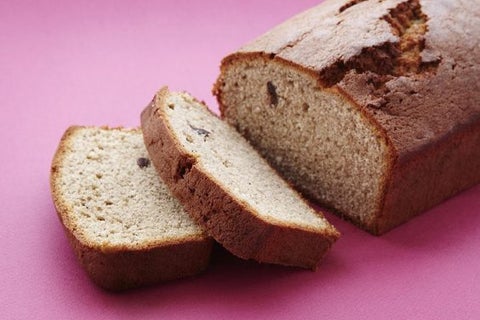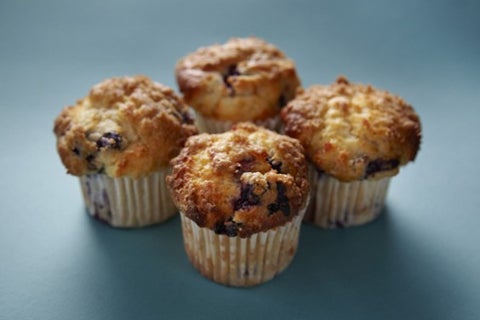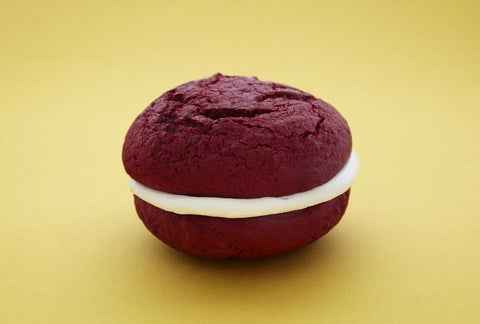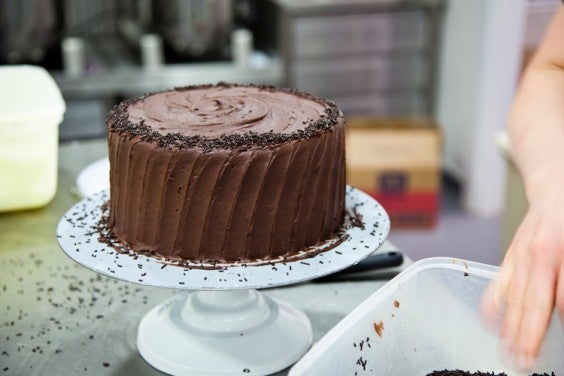
Unfortunately we can’t answer individual queries via the blog. Baking has many variables and it takes practice.
Even at our bakeries, it doesn’t always go perfectly, so don’t feel disheartened if it doesn’t work first time.
Making the perfect cake or cupcake is both a science and a skill – it’s not easy being this tasty.
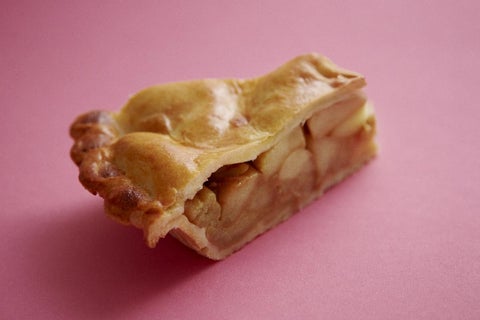
Pies
Baked Cheesecakes
Brownies
Cakes, Cupcakes and Sponge Conversions
Cakes, Cupcakes and Sponge Queries
Cookies
Fruit Cakes/Fruit Cupcakes
Loaf Cakes
Muffins
Whoopie Pies
Pies
Should my pie filling wobble when taken out of the oven?
Depending on the heat of your oven, it might take longer to achieve the desired texture for your pie filling. Using an oven thermometer is one way to check the heat of your oven.
It’s done when it’s done – when it comes to baking, various factors affect the timing and you simply have to leave it a little longer.
My pie crusts always bubble up in the oven. Is this normal?
So long as you are using baking beads (or weighting your pie crust) as instructed, it’s perfectly normal for the crust to puff up a bit. It’s very tricky to get it perfectly flat.
Giving your baking paper a vigorous scrunch before lining over the pastry and filling with baking beads should make it easier to get the beads into all the corners.
My pie crust is turning out too dry. Can I add more water?
We recommend following the recipe as closely as possible. If you flour your work surface before rolling be aware that adding too much flour can change the balance of the recipe as it gets added to the dough itself. It only takes a light dusting!
As a rule of thumb, the less you handle your pie crust the better. If you overwork your pie crust dough it will become harder and the resulting bake will be more biscuit-like.
Pie crust should be worked on a cold surface in a cool kitchen environment and it is best to avoid over-handling. You can even place it between two sheets of clingfilm when rolling to keep it as cold as possible.
As soon as the pastry comes together, wrap it in clingfilm and leave it to ‘rest’ in the refrigerator. Be sure not to overwork the gluten in the flour by over mixing. We recommend that you add only 1-3 tablespoons of water and it shouldn’t be necessary to add more than that.
Can I make the pie crust dough in advance?
Yes, you can make it the day before and refrigerate. This is actually preferable as it will allow the dough to relax before rolling.
Always ensure everything is cold when you come to roll out your pie crust, from the work surface to the kitchen environment and be careful not to overwork it.
What can I do with leftover pastry?
You can get creative! Roll out and cut out pastry shapes (such as leaves) for the top of your pie or use them to line a mini tart tin and blind bake to make ready-to-fill pastry cases.
The recipes are correct in their measurements so there shouldn’t be too much left over, although a little extra has been allowed to make lining the pie dish easier.
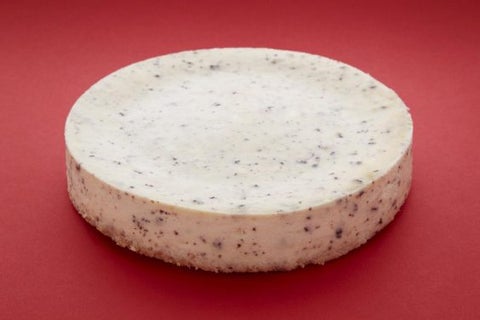
Baked Cheesecakes
The tin leaked and now I have a soggy cheesecake base. What can I do?
There’s not much that can be done for a soggy bottom unfortunately! But the key thing to remember for next time is to wrap your tin well and be very careful not to accidentally perforate the foil by being too heavy handed.
Check that your tin is also closing correctly. But metal foil won’t allow water through if it is properly wrapped.
Can I try baking my cheesecake without water?
If you wish to bake a cheesecake without the bain-marie it will still work if you are very careful, but the results won’t be exactly as intended.
We recommend baking in a bain-marie (water bath) as it makes for a much gentler cooking process. If a cheesecake bakes quickly at a high temperature it is at risk of cracking across the top.
Do I add the water before placing my cheesecake in the outer tray or afterwards?
We recommend only adding the water (very carefully) after the cheesecake has been placed in the outer tray. Be sure not to splash water into the cheesecake itself when pouring.
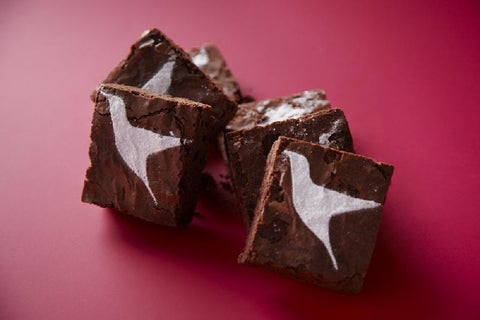
Brownies
How thick should my brownies be?
American brownies are generally only around ½ inch/2 ½ cm thick, so they are not supposed to be thick slabs of chocolate sponge.
Brownies in the UK can be very cakey and this isn’t an authentic American style brownie.
The brownies aren’t very cakey. What’s going on?
We bake our classic brownies American-style, which means thin, gooey and chewy rather than thick and spongy.
Our recipe for frosted brownies is a little different and a bit thicker – having a less dense brownie seems to work well with the decadent frosting.
The edges are chewy but the middle is soft. Have I made them right?
Yes, brownies will always go chewier at the edges and stay fudgey in the middle. In our bakeries we trim off the edges to make our brownies to smarten them up, but if you like the edges there’s no requirement to cut them down to size.
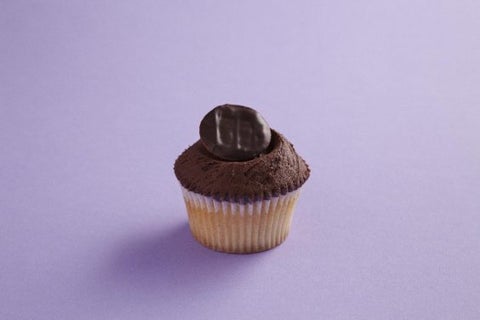
Cakes, Cupcakes and Sponge Conversions
I’m using a giant cupcake tin/a different shaped to the one stated in the recipe. How much mixture do I use?
Our recipes are designed to fit certain dimensions and we haven’t tested other cake tin shapes and sizes. Any new tins will be an experiment, but this doesn’t mean it won’t work – it may simply take a few tries to get it right.
Generally, we still recommend you only fill the tin two thirds full (unless you are making muffins which should be three quarters full).
Can I make a layer cake out of your cupcake recipes and vice versa?
Any change in the method or equipment is an experiment, so unless you are following one of our recipes it will be a freestyle cake! Not all recipes will work as well when converted into other sizes.
For example, some of the recipes with a lot of fruit in may not work as well as the fruit can prolong the cooking time.
Generally, if you double our cupcake recipes you will make enough mixture to get a 3 layer 8 inch/20 cm cake.
The cooking time will change when making cake layers instead of cupcakes due to the volume of mixture to be cooked (and vice versa if you intend to change a layer cake recipe into cupcakes the cooking time will probably reduce).
Look through our cookbooks to find similar recipes and try a similar baking time and oven temperature.
How many cupcakes will I get from one of your layer cake recipes?
Depending on the size of your paper cases (we recommend muffin cases), you can get anywhere from 20-28 cupcakes from a layer cake mixture.
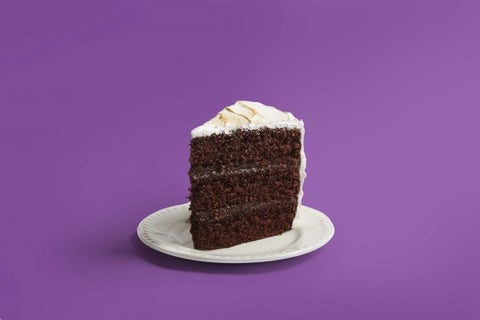
Cakes, Cupcakes and Sponge Queries
My sponge didn’t work out right. What went wrong?
Baking is an exact science and has many variables, so without being present we can’t tell exactly what went wrong. Our recipes are correct as written and have undergone repeat testing. Everyone’s oven is different and this will affect cooking times.
Using an oven thermometer is really the only way to know whether your oven is the correct temperature for the recipe. Ingredients should be weighed out accurately and should be level unless stated. Digital scales will give more accurate readings than mechanical scales.
Using different cake tins to those recommended in the recipe will change the dimensions and affect the result. Technique is important and practise makes perfect – certain recipes are more complex than others and may take time to get spot on. Please read on for more possible explanations to common sponge problems.
Are the baking times correct?
All times and ingredients are correct as written. Different ovens vary in temperature, so an oven thermometer is the only accurate way of knowing how hot your oven is.
Baking times are guidelines and you may need to increase or decrease cooking times until you get the desired effect. When it is done, it is done!
My cakes rose beautifully in the oven, but have all sunk since taking them out of the fridge. What has happened?
Most cake batters will tend to rise as they bake and flatten out as they cool; this is normal. If there is a pronounced dip, then it could be a number of things. Make sure you measure all your ingredients carefully and make no substitutions.
Raising agents such as baking powder and bicarbonate of soda have use by dates, so make sure yours are within date.
My cupcakes have risen into volcano-like peaks. Why is this?
Some cakes can rise into peaks and this is absolutely normal.
This can happen sometimes if your oven is too hot, but if the sponges are light and moist then they’re fine. This often happens with Red Velvet Cupcakes, but you can’t judge a sponge by what it looks like until it is fully dressed with frosting!
You can use a sharp serrated knife or bread knife to cut off the peaks if you find it easier to frost them flat and the peaks can be blitzed up in a food processor to make Red Velvet crumbs to decorate.
My sponges have a hard, brown top. What has gone wrong?
Sometimes this can happen if the dry ingredients haven’t been mixed properly. Sugar can cause the top to caramelise, so ensure that you mix all the dry ingredients fully before you combine the wet ingredients into the mixture.
A spatula or wooden spoon can be useful to mix by hand after combining to ensure the sides of the bowl are clean and the sugar is evenly mixed in.
But it’s important to remember that the exposed top of the sponge will naturally be more dry and caramelised than the centre, although there is a fine line between caramelised and burnt!
My sponges are too thin and aren’t rising properly. What has happened?
Check your raising agents are within their use by date and that the oven is at the correct temperature for the duration of baking.
A common mistake is failing to cream butter and sugar together adequately. This is an important stage and getting them well beaten so they’re light and airy will help to incorporate lots more air into your sponge helping it to rise correctly.
My cupcakes have cracked across the top. Should I be worried?
No, some sponges will crack under the pressure of a hot oven! So long as they taste good and aren’t burnt, they’re fine.
Frosting is a fantastic cupcake cover-up and will mask a multitude of imperfections!
My layer cakes have cracked across the top. Is there anything I can do to prevent this?
Some sponges, as stated before, will just crack.
However, if you run a knife around the inside edge of your tin when the cake is straight out of the oven it will help to prevent the cake from cracking as it shrinks and cools.
My cake batter looks far too runny. What is wrong?
Our batters are made very thin as this added moisture keeps the sponge lovely and light. Never judge a batter until it’s baked!
Can I make my cake mixture in advance?
We always bake fresh, so we haven’t tested mixtures made in advance unless the recipe asks for mixtures to rest.
But for most recipes you can make the cake mixture in advance and store it in the fridge overnight before baking the next day.
What happens if I overbeat my sponge mixture?
Overbeating your sponge mixture will overwork the gluten in the flour and this can alter the structure of the sponge making it dense.
This is why we knead bread for an extended period of time to work the gluten.
How can I tell if my sponge is cooked through?
Run a clean metal skewer through the centre and if it comes out cleanly, it’s ready.
Another way to help test whether the sponge is done is to press the top of the sponge lightly with your finger, it should bounce back immediately and not leave an indentation.
What happens if I take the sponge out of the oven too early?
Only take your sponges out of the oven when they are ready. An undercooked sponge doesn’t have the structure to support the weight of itself and will probably sink.
I made one of your ring cake recipes and it overflowed. Are you sure the recipe is correct?
All our recipes are correct as written. If the cake has overflowed, there is simply too much cake mixture in the tin.
Rather than waste leftover mixture, you can pour the batter into cupcake cases and bake until done (please see ‘How can I tell if my sponge is cooked through?’ for tips).
I made your frosting and there was so much left over. Are you sure it’s the right amount?
We frost very generously! This is our personal preference and the amount in our recipes is similar to the amount we use in our bakeries.
Many home bakers don’t use enough frosting in the middle, but our American-style cakes require lots of generous frosting between the layers and on top. If you have a personal preference for less frosting, by all means reduce the recipe to suit your taste.
Will multiplying the recipe (doubling or tripling) affect cooking times?


